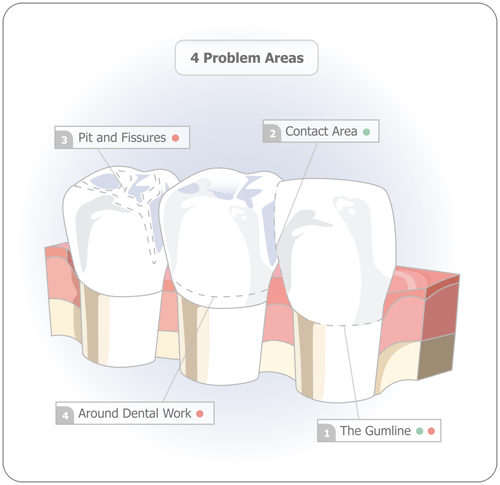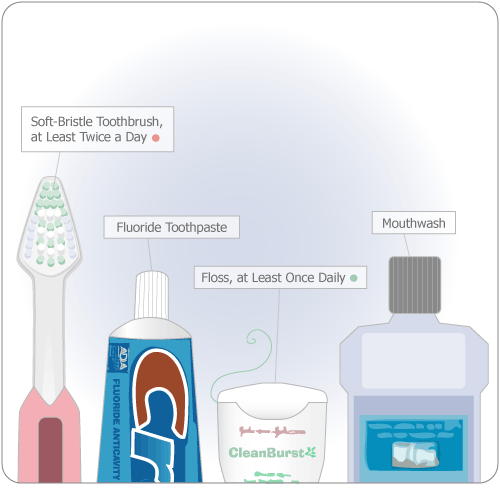-
Insurance
Routine Dental Checkups
Routine dental checkups are essentials to having a good oral hygiene. Having regular checkups guarantees that problems are detected at their earliest stages, which saves both time, energy and financial resources.
According to The Academy of General Dentistry, dental checkups should be done at least twice per year. Also, depending on your age or your health condition, your dentist may recommend more or less frequent checkups.
Your dental checkups should include:
- A medical assessment of your mouth, face, jaw and neck
- A digital diagnostic, done by your dentist
- A gingival exam
- A professional cleaning of your mouth area
- A medical report stored in an electronic dental record
The Visual Exam
During the visual exam, the dentist will use a small camera to see the inside of your mouth. You can watch the video on a display by your chair, in real time, together with your dentist.
Your dentist will look for cracked, chipped or decayed teeth, as well as sores on your gums, tongue, lips, gums or mucous membranes. Also, he or she will check your lymph nodes, jaw, or neck for pain or tenderness.
Digital Diagnostics
Digital X-rays:
These special X-rays detect hidden dental problems which are omitted in a visual exam. Digital X-rays use 90 percent less radiation than normal X-ray technology, so your safety is guaranteed.
3D Imaging:
3D Imaging helps your dentist determine the exact position and shape of your tooth. This technology helps dentists through the whole treatment process, as it offers a detailed image of your teeth.
Gingival Pocket Exam:
Gums are essential for your overall oral hygiene and health. The gingival pocket exam is focused on the health of your gums and surrounding area.
What to Know:
- Teeth sit in a gingival pocket which is prone to debris or food buildup
- Daily brushing can help clean this debris and bacteria
- If brushing is not adequate, the gingival pocket gets deeper, increasing the risk of infections and gum disease
- Your dentist will use a special tool to measure the size and depth of your gum pockets
- Gum disease is easily treated during its early stages; unfortunately, because it is not painful, many patients may have gum disease without knowing it
Professional Cleaning
Professional cleaning can help you fight gum disease from its earliest stages. The teeth are cleaned, polished and the plaque is removed. Because the teeth are polished, the plaque is less likely to accumulate.
Electronic Dental Records
Dental records are kept electronically and patients as well as doctors have immediate access to them whenever needed. Access to medical histories is also easy, but also to previous exams, diagnostics or treatment plans. Patient waiting times are also reduced, allowing more time for appointments and treatment.
Good Oral Hygiene
Having excellent oral hygiene is all about keeping plaque and food decay from building up in your oral cavity. Plaque and food decay create bacteria buildups, which cause cavities, gum disease and other infections.
Your tongue can attract bacteria, too. During eating or drinking, tiny fragments of food collect on your tongue. As the fragments continue to decay, bacteria will create a white, translucent coating on your tongue.
Try this four-step plan to keep the plaque and harmful bacteria from building up in your mouth.
Easy Four-Step Plan
To keep your teeth and gums in perfect health:
- Brush your teeth daily (after breakfast and before bedtime); use mouthwash
- Use dental floss on a daily basis
- Use a tongue scraper to clean your tongue
- See your dentist for regular checkups
Benefits of Having Good Hygiene
When you practice good oral hygiene, you will:
- Have less plaque on your teeth, so professional cleanings will be faster, cheaper and more comfortable
- Visit your dentist less frequently
- Minimize your dental budget
- Feel healthier and more energetic
- Have a better breath
- Be more confident about your smile
Infants & Small Children
According to The American Academy of Pediatrics, a child?s first visit to the dentist should be around age three, unless any of these dental risk factors exist:
- Sleeping with a cup or bottle
- Thumb sucking
- Teeth staining
- Down Syndrome
Children?s Oral Hygiene
When your child?s teeth begin to erupt, clean them daily with a moist cloth to remove tooth plaque and buildups.
As soon as your child is older, use a soft child?s toothbrush with non-fluoride toothpaste (such as Baby OraGel). Do this until your child is able to spit the toothpaste.

Contact
Indian Trace Dental Associates
46 Indian Trace
Weston, Florida 33326954-217-9200
Pages
- ABOUT US
- Contact Us
- Dental Health Services
- Dentist Appointment
- Home
- Meet our team
- Notice of Non-Discrimination
- Notice of Privacy Practices
- privacy policy
- Sample Page
- Site Map
- Terms of use
- CEREC? CAD/CAM
- Crowns
- Insurance
- Dental Hygiene
- Dental Technology
- Dental Technology – old
- Emergency
- fillings
- Root Canal
- Teeth whitening
- Lumineers
- Wisdom teeth / oral surgery
Information
Payment Options

![]()


